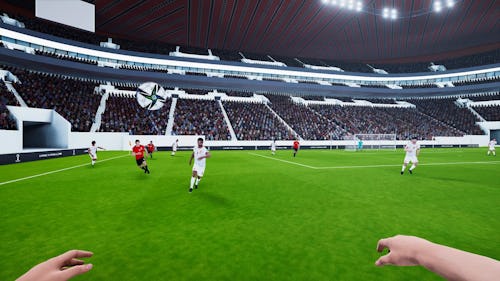
FIFA’s Club World Cup may not be the actual World Cup, but it offers a mid-season tournament for some of the best football clubs across the most competitive confederations in the world. England’s Chelsea, Brazil’s Palmeiras, Mexico’s Monterrey, and other continental champions will participate in the event from February 3 to February 12 in Abu Dhabi.
Aside from breaking up the regular ebbs and flows of league play, the tournament can be used to try out new things. This year, FIFA intends to test out “limb-tracking technology,” something that “enables the real-time creation of three-dimensional visual representations of players’ skeletons.”
Embracing modern technology to facilitate the game is nothing new in the sport — goal-line technology is already implemented to track the position of the ball, taking away the human error during calls made on shots. Additionally, there is a VR app that allows players to practice heading without risking the possibility of injury (i.e. making direct contact with a soccer ball).
Offside decisions —
This new technology will be most useful in offside calls, so once again, teams will not have to rely on whether or not the referee had a clear sightline on the play. And although it is a bit dystopian to imagine a world where sports are judged by an algorithm, goal-line and offside decisions can be sped up to improve the overall flow of a match.
So how exactly is “limb-tracking technology” implemented? This emerging tech “relies on a dedicated camera system, installed under the roof of the stadium, that captures the movement of all the players and the ball.” From there, it’s just a matter of establishing when a pass forward is made and then analyzing the positions of all the players’ limbs at the time of the pass.
FIFA is also interested in VR possibilities for the sport — new data sets and “processing by AI-based visualization companies” have made it possible to capture an entire match as a virtual animation, allowing users to examine a game from all sorts of perspectives. It’s similar to the metaverse tech that the Brooklyn Nets debuted earlier in January.
My only question is whether or not people will actually want to invest in the resources to participate in the VR-ification of live sports. Sure, it looks better than VR projects in the past but it’s still a ways off from comparing to the actual experience of watching athletes compete at the highest level in-person.







